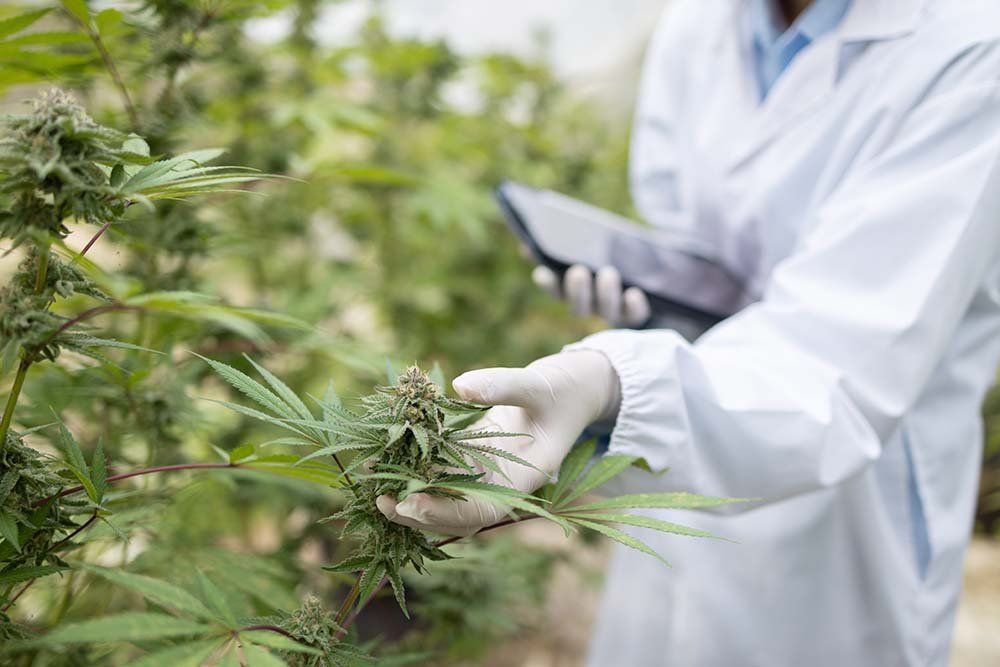[ad_1]
At a time when cannabis is increasingly available, reports of related health problems are making news in the New York Times and elsewhere. They cite addiction, psychosis, severe vomiting and more, mostly in chronic users.
Kevin M. Gray, M.D., a professor of Psychiatry and Behavioral Sciences at the Medical University of South Carolina who specializes in addiction treatment, isn’t surprised. “This is something I frequently encounter clinically. We have multiple experts focused on cannabis use disorder here at MUSC. It’s interesting because the prevailing narrative in the media is that cannabis is not only benign, but it’s good. It’s an elixir or a panacea. But it’s far more complicated than that,” he said.
Gray said any time a person takes a substance or medication, it’s important to be informed not only about potential benefits but also possible side effects. “And that’s sort of thrown out the window with cannabis. It’s an unusual situation where people are using it for purported therapeutic purposes without a lot of guidance.”
So what should that guidance be? First, Gray said people need basic information about the cannabis plant. “Cannabis contains more than 100 distinct cannabinoids. The two that we talk about the most are THC, or tetrahydrocannabinol, and then CBD, which is cannabidiol. CBD has been isolated and is used therapeutically as a Food and Drug Administration approved medication for seizures and certain specific conditions.”
Gray said THC exposure is the factor that seems to predispose some people to problems. “It’s the active ingredient that yields the ‘high’ that is associated with cannabis. Over time, available products have higher and higher THC concentrations. If somebody hasn’t been exposed to cannabis and they use a very high THC potency product, they could have a panic episode or sudden anxiety, or they could have an increased heart rate because they’re not acclimated to it.”

That’s on the low end of potential problems. On the higher end, Gray said some chronic users can develop cannabinoid hyperemesis syndrome. That causes vomiting and other symptoms and can lead to “extreme dehydration, seizures, kidney failure and cardiac arrest,” according to the New York Times.
Some users can also develop psychosis, a phenomenon Gray first observed as a medical student in the late 1990s. “A young adult patient presented to the Emergency Department acutely psychotic, responding to unseen others and making wild gestures. He was highly agitated. His friends had brought him in because this behavior occurred all of a sudden, and they didn’t know what was wrong,” he said.
“The initial assumption was that he must have used some kind of hallucinogen or cocaine. But his drug test was only positive for cannabinoids, and his friends noted that this behavior emerged while he was using cannabis. They felt certain he had not used other substances,” Gray said.
“After reviewing the presentation and examining the literature, the treatment team concluded that this was an acute cannabis-induced psychosis. The patient was admitted to the hospital, and his symptoms cleared over a few days, further supporting the notion that this was an acute psychotic reaction to cannabis.”
Gray isn’t sure what happened to the patient after that – whether he stayed healthy or had further problems.
He does know that decades later, cannabis, on average, contains a much higher concentration of THC than in the past. That can bring addiction into the picture as well.
“Growers are cultivating a product to maximize THC potency, but we also know that THC is the addictive component. You can imagine how that process plays out. Consumers demand a more potent product, but a more potent product may predispose more people to addiction.”
Meanwhile, they may not know that addiction is even a possibility. “Many individuals who use cannabis keep hearing the messaging that it’s not addictive. But we frequently work with patients who are engaged in treatment who really have a hard time quitting or even reducing their use.”
Overall, use is on the rise. Cannabis use is now legal in about half of all states. It remains illegal in South Carolina. Supporters say it’s less dangerous than alcohol and can help reduce stress and pain.
And some people with serious health problems, including cancer, swear by it. A study by MUSC Hollings Cancer Center researcher Erin McClure, Ph.D., found about a quarter of the center’s patients reported having used cannabis since their diagnoses. They said it helped with “sleep, pain, mood changes, stress, anxiety and depression.”
“Cannabis is not all good and not all bad. It contains compounds that can be used therapeutically. It can be recreationally pleasant when used responsibly by individuals with low risk, but it can be problematic in people with high risk. We are particularly concerned about use during adolescent development, use during pregnancy and use by individuals with mental health difficulties. If you add cannabis to a psychiatric disorder, the course of the disorder becomes more complicated,” Gray said.
“It is not necessarily easy to predict who might have an adverse outcome, but it’s important that the public be informed that cannabis use is a complex issue, with a need to carefully weigh potential risks and benefits of use. Researchers and clinicians at MUSC and elsewhere are working to advance our understanding of cannabis and cannabinoids so that we can contribute to improved health outcomes. This involves rigorous research on cannabinoid therapeutics as well as cannabis-related health problems.”
[ad_2]
Source link
Share this content:
